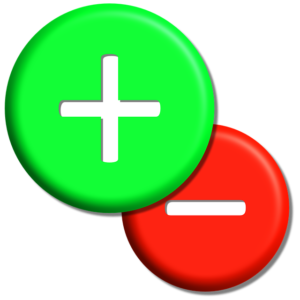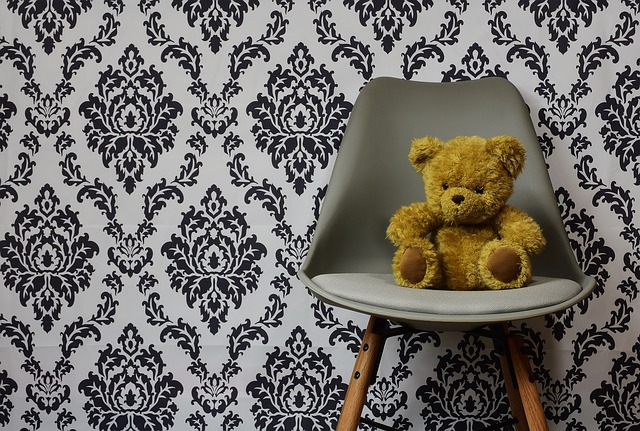In our last post, we continued the discussion of the ABC’s of behavior management, focusing on the C’s, Consequences.
As a reminder, consequences simply put, are what happen following behaviors in our ABC model. We started with the consequence of reinforcement which occurs following a behavior that increases the likelihood that the behavior will occur again. We also discussed positive and negative reinforcement. You can review that post here to get more information and clarification on reinforcement. Now, we’re going to turn to another broad category of consequences: Punishment.
**One note, however: you’ll notice a mirroring in language between the previous post on reinforcement and this post dealing with punishment. It’s on purpose to illustrate and highlight the elements of positive and negative as related to consequences.**
-Punishment
Punishment is a consequence that decreases the likelihood that a behavior will occur again. It is also straightforward like reinforcement. It’s important to note that like reinforcement, punishment doesn’t guarantee that the behavior will decrease, but that there’s a good chance that the behavior will decrease following the use of a punisher. Also, it’s important to know that what is punishing is often different for different individuals…there are some general tendencies, but it still comes down to each individual.
There are two types of punishment, and the terminology used is often more confusing for parents and professionals than is reinforcement. There is positive punishment and negative punishment, and since this piece is being written with parents in mind, I’m going to use a little latitude and change these terms to be more descriptive.

Let’s consider positive punishment as additive, and negative punishment as subtractive. Notice that positive does not mean good and negative does not mean bad; these are very common misconceptions. So, what do I mean by those terms?
–Positive (Additive) Punishment
When we add something following the occurrence of a behavior (or misbehavior), it is called positive, so this is why I’m using the term additive. If my child leaves his or her dirty clothes on the floor, and I say “I’m disappointed that you left your dirty clothes on the floor”, I have added something following the behavior. In this instance, this is a very simple verbal reprimand, and, for many kids, reprimands decrease behavior. Some folks may argue that the reprimand that I reference isn’t really a reprimand, but it really depends on the individual child…for some kids, this is a significant reprimand. However, many people think a five minute lecture would be considered more of a verbal reprimand, and I’d say maybe…again, it depends on the child, but it could also turn into white noise to the child much like Charlie Brown’s teacher from the Peanuts comic strip/cartoon and lose its punishing effectiveness. The punishment must also occur very soon after the unwanted behavior for it to be effective; immediately if possible.
Another form of positive (additive) punishment is spanking. At this point, I’m not going to go into the pros and cons of whether to use spanking, but spanking is often used, so we need to illustrate it in context. When a child is swatted on the bottom for a misbehavior, we obviously are adding something – the swat – with the intent of decreasing the likelihood that the behavior will occur again.
***Sometimes I talk with parents who have used spanking (positive punishment) in an attempt to increase a behavior. For example, the child didn’t feed the dog, so the parent spanked the child with the intent of increasing the chance that the child will feed the dog next time. Punishment, as we now know, by definition, decreases behavior, so the parent, in this case, has made the likelihood that the child will feed the dog next time lower. That is exactly opposite of what the parent hoped or hopes to accomplish. And this can lead to a negative cycle that parents fall into because they don’t quite understand how reinforcement and punishment work.***
There are also a set of expectations that need to be in place before these consequences are used; more on this later.
As is the case with reinforcement, punishment is also a factor with adult behaviors…we’re still sticking with the kids though.
I’ll reiterate from earlier, the use of punishment, does not guarantee that the behavior will decrease, but there’s a better chance that the behavior will decrease.
–Negative (Subtractive) Punishment
When we remove or subtract something following a behavior, it is called negative, and this is why I’m using the term subtractive. Negative punishment therefore is subtracting something that is reinforcing to decrease the likelihood that the behavior will occur again. One of the most common and easily understood examples of negative punishment is the use of time-outs. A time-out is the removal of something that is otherwise reinforcing; something that the child wants. Now that screens are fairly common (cell phones, tablets, TVs, video games, etc.) and very much wanted by kids, they also become useful for parents in a discipline plan, especially in the use of negative (subtractive) punishment. When the child misbehaves, say talks back to a parent, or hits a sibling, the child can be put in time-out away from the reinforcer (the screen) or the screen can be put in time-out for a set amount of time. The misbehaviors of talking back or hitting, in this example, will likely decrease by taking away the reinforcer briefly. The child talks back, the screen is removed, and the talking back is likely to decrease in the future. Again, the negative punishment (time-out) must occur soon after the misbehavior for it to have an effect and they must be connected – “you hit your brother, your screen is in time-out”.
While we’re on time-outs, parents and teachers often use time-outs that are far too long and lose their effectiveness. As a general rule-of-thumb, time-outs should last about a minute per year of age, so an eight-year-old’s time-out should last about eight (8) minutes; that’s all. If the time-out lasts too long, the child will have forgotten why the whole thing got started in the first place – their attention spans aren’t that long to begin with, and they are already thinking about something else if you go much longer.
As promised, let’s now turn to a couple of terms I hear from parents that often cause some problems in day-to-day behavior management; expectations (what we, as parents, expect our kids to do, should do, or be able to do), and bribery. Those two topics require more explanation. Let’s look more in depth at those in the next post.
If you need more help with behavioral techniques, please contact us at 865-974-6395 or klass@utk.edu.
